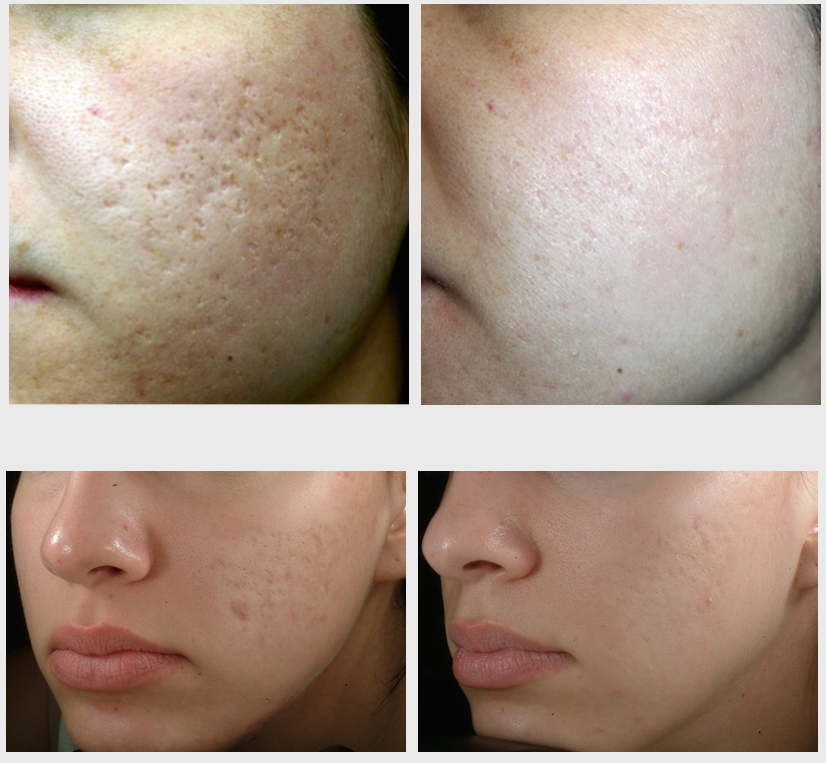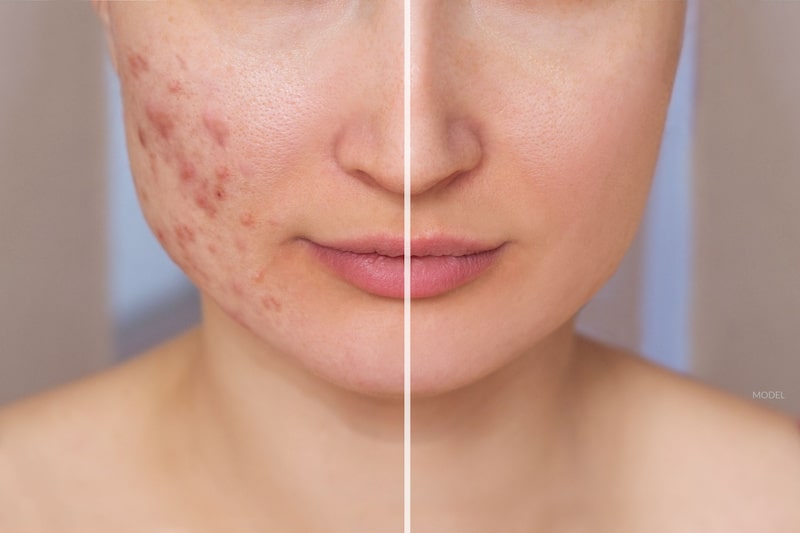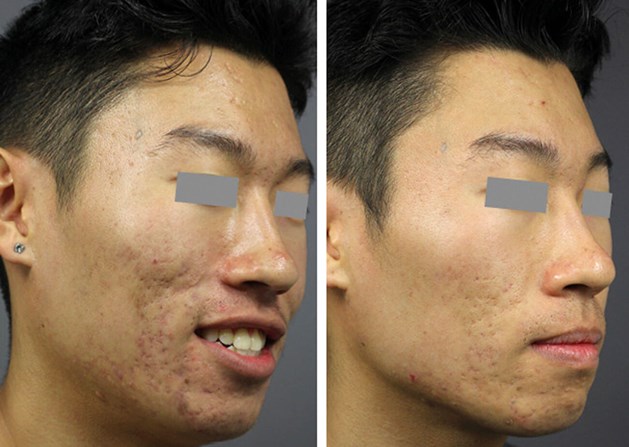Comprehensive Acne and Acne Scars Treatment: Recover Your Skin's All-natural Appeal
Comprehensive Acne and Acne Scars Treatment: Recover Your Skin's All-natural Appeal
Blog Article
Comprehending the Different Skin Disease and Reliable Treatment Options for Acne Marks
Acne scars represent a complex interaction of skin disease that considerably impact individuals' self-worth and total skin health. Understanding the unique kinds of acne scars-- atrophic and hypertrophic-- alongside their underlying causes, is pivotal for figuring out efficient treatment strategies. Different healing alternatives exist, ranging from sophisticated skin-related procedures to all-natural solutions. Nonetheless, the efficiency of these therapies usually depends upon customized analyses by certified specialists. As we explore the landscape of acne mark management, it comes to be noticeable that the journey toward more clear skin might entail greater than just topical options.
Kinds of Acne Scars

In contrast, hypertrophic marks result from an overproduction of collagen during the recovery procedure, bring about increased areas on the skin. These marks are frequently firm and can vary in color, in some cases appearing red or darker than the surrounding skin.
Understanding these kinds of acne scars is essential for establishing an efficient therapy plan - acne and acne scars treatment. Choices may consist of chemical peels, laser therapy, microneedling, or facial fillers, customized to the specific mark type. A thorough examination with a skin specialist can help establish one of the most suitable treatment, considering the person's skin type, scar intensity, and overall skin health
Sources Of Acne Scarring
Scarring occurs as a result of the body's natural healing reaction to swelling and injury created by acne lesions. When acne types, it activates an inflammatory response, leading to the release of various cytokines and development factors that advertise recovery. This process can in some cases lead to excessive cells formation or insufficient repair work, resulting in scars.
The main reasons for acne scarring consist of the extent of the acne itself, duration of the lesions, and individual skin types. Extreme inflammatory acne, such as cysts and nodules, is much more most likely to result in scarring because of much deeper cells damages. Furthermore, inappropriate handling of acne lesions, such as choosing or squeezing, can worsen cells injury and swelling, raising the likelihood of scarring.
Hereditary predisposition likewise plays a considerable function; individuals with a family background of scarring are at a greater danger. Skin type and shade can affect scar formation, as darker skin tones might experience post-inflammatory hyperpigmentation, while lighter skin might establish atrophic marks.
Inevitably, understanding these causes is vital in managing acne and minimizing the possibility for scarring.

Treatment Alternatives for Scarring
Reliable treatment options for acne scarring vary depending upon the type and extent of the marks. Normally categorized right into atrophic, hypertrophic, and keloid marks, these conditions need customized strategies for ideal outcomes.
For atrophic scars, which are identified by a loss of tissue, therapies such as chemical peels, microdermabrasion, and laser treatment are commonly utilized. These methods promote skin renewal and stimulate collagen production, consequently improving skin texture. Subcision, a minimally intrusive treatment, can likewise be effective by damaging up coarse bands under the skin.
Hypertrophic and keloid scars can be a lot more challenging to deal with. Options consist of corticosteroid shots to minimize swelling and flatten the marks. In many cases, cryotherapy or laser therapy may be recommended to minimize their appearance.
Surgical options are offered for extreme scarring, where excision or skin grafting may be needed. It's necessary for individuals to consult with a skin doctor to evaluate their particular scar kind and review the most appropriate therapy plan. Integrating multiple treatments usually yields the very best outcomes, making certain that each person's special skin problem is dealt with effectively.
Home Solutions and All-natural Solutions
Natural options and natural home remedy can provide an easily accessible method for individuals looking for to improve the appearance of acne marks (skin rejuvenation treatments). Various ingredients located in the home cooking area have actually demonstrated potential benefits in enhancing skin structure and promoting recovery

One more reliable option is lemon juice, which works as visit their website a natural exfoliant and can lighten hyperpigmentation. It should be made use of cautiously, as it may cause photosensitivity. Oat meal masks are also useful; their mild exfoliation can help eliminate dead skin cells while soothing irritation.
Important oils, such as tea tree oil and lavender oil, can additionally support mark healing as a result of their antimicrobial buildings. It is important important source to do a patch examination before using any remedy to guarantee there are no negative reactions. These natural options can be a corresponding strategy in the journey to lessen acne marks.
Preventing Future Scarring
Embracing a proactive technique to skincare can substantially reduce the threat of creating future acne scars. One of the essential approaches is to handle acne effectively as it develops. This entails utilizing non-comedogenic skincare products and drugs recommended by dermatologists that target acne without aggravating the skin. Regular cleaning, exfoliation, and hydration can help keep skin health and wellness and protect against stopped up pores.
Additionally, staying clear of the lure to squeeze or select acne sores is vital, as this can result in swelling and succeeding scarring. Instead, people should concentrate on using topical treatments that promote recovery and decrease swelling. Components such as salicylic acid, benzoyl peroxide, and retinoids are recognized for their efficiency in managing acne and minimizing scars.
Sunlight protection is another vital part; exposure to UV rays can dim scars and restrain recovery. As a result, making use of a broad-spectrum sun block daily can alleviate these results visit our website - acne treatment for sensitive skin.
Last but not least, keeping a healthy and balanced diet regimen rich in anti-oxidants and remaining moisturized supports skin regeneration. By executing these safety nets, people can dramatically reduce their threat of future scarring and promote overall skin health and wellness.
Verdict
In verdict, a comprehensive understanding of acne scars, incorporating both hypertrophic and atrophic types, is important for reliable therapy approaches. Assessment with a skin doctor continues to be imperative to devise individualized methods that take into consideration individual skin kinds and mark intensity, ultimately enhancing the efficiency of scar administration strategies.
Acne marks stand for a complex interaction of skin conditions that substantially influence individuals' self-confidence and general skin health and wellness. The two main categories of acne scars are hypertrophic and atrophic marks. These marks are further classified into three subtypes: ice choice marks, which are slim and deep; boxcar scars, which are larger and have distinct sides; and rolling scars, which create a wave-like look due to unequal skin texture.
An extensive assessment with a dermatologist can aid determine the most proper intervention, taking right into account the person's skin kind, mark seriousness, and general skin wellness.
Consultation with a skin specialist stays vital to devise tailored methods that think about private skin types and mark seriousness, eventually boosting the efficiency of scar management techniques.
Report this page